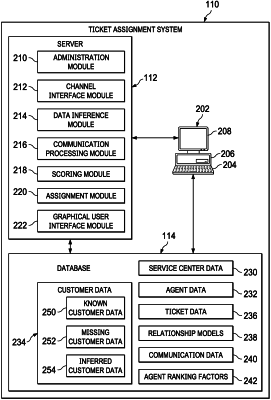| CPC G06Q 10/06395 (2013.01) [G06F 40/20 (2020.01); G06N 5/04 (2013.01); G06Q 10/067 (2013.01); G06Q 10/063112 (2013.01); G06Q 10/063114 (2013.01); G06Q 30/016 (2013.01)] | 20 Claims |

|
1. A computer implemented method for inferring missing customer data in assigning a ticket to a customer, and preventing reopening of the ticket in response to receiving trivial communication, the computer implemented method comprising:
training, by one or more hardware processors, an unsupervised deep learning model, using a set of relationship models defining relationships between missing gender data and customer data, by inferring the customer data with a gender of the customer using the set of relationship models, a list of male first names, a list of female first names, customers of said gender with a similar name, and other inferred customer data records including language, and by associating the gender of the customer with the inferred customer data;
analyzing, by the one or more hardware processors, content of one or more communications for the inferred customer data, by:
assigning, by natural language processing, a value to the content including the language and the gender, and
scanning the content for particular words, phrases, text, or emoji, using the set of relationship models associated with the value of the content;
analyzing, by the one or more hardware processors, the one or more communications to identify a topic of the one or more communications by scoring, by the natural language processing, a similarity between the topic and the ticket associated with the customer, calculated as a distance metric between the topic and the ticket, and by assigning weighted points to a matched subject of the ticket, and to ticket data in connection with opening and closing the ticket, and to a matched topic of the ticket and the ticket data;
performing, by the one or more hardware processors, a triviality analysis by receiving other communication assigned to the closed ticket, and, by determining, based on the distance metric of the natural language processing, that the other communication is related to a same problem as the closed ticket;
preventing, by the one or more hardware processors, reopening of the closed ticket in response to determining that the other communication is determined as trivial.
|